
Dolby
Looking back, the Dolby project feels sort of like an Arthurian epic. Instead of swords, we had naive questions. And the only dragon needing slaying was Dolby’s outdated sense-of-self. The original ask: help us figure out what to do when our licensing business (which had been, until late, a self-sustaining revenue goldmine) goes ‘poof’. The challenge: getting a company off of its laurels and back into the game again. How we did it: by workshopping our way to a new vision of the future—and a concrete strategy for getting there. And by helping rebuild the brand around that strategy—expressing their new POV in a consistently immersive way across everything from print and digital to products to built environments.
So, soup-to-nuts inside-out rebrand basically.

The Problem
—
We forgot to innovate and our brand is fading.
To say that Dolby had hit a dry patch when they called us might be a bit of an overstatement. They were still the preeminent ingredient brand in the audio space—but people internally had a nagging sense that their mojo might be slipping. The glory days when Ray Dolby ran the place like a scrappy innovation lab, largely unconcerned with profit and totally obsessed with excellence, were gone. New competitors were creeping in all over the place. And, as our pals at Think Brand New put it when they brought us in on the gig: “The place is all accountants and attorneys now—where are the scientists?”
Because of their patented technology, licensing eventually became Dolby’s biggest breadwinner. But suddenly brands like Beats were winning deals on the merit of their brand recognition alone (they had a lot of cred with consumers, but didn’t actually own any novel technology). Consumers appeared to value fame over fidelity. And now that consumer devices don’t have a noise reduction button, the Dolby brand had lost its recognizability to a whole generation of consumers. The brand seemed to be dimming and the future didn’t look bright.

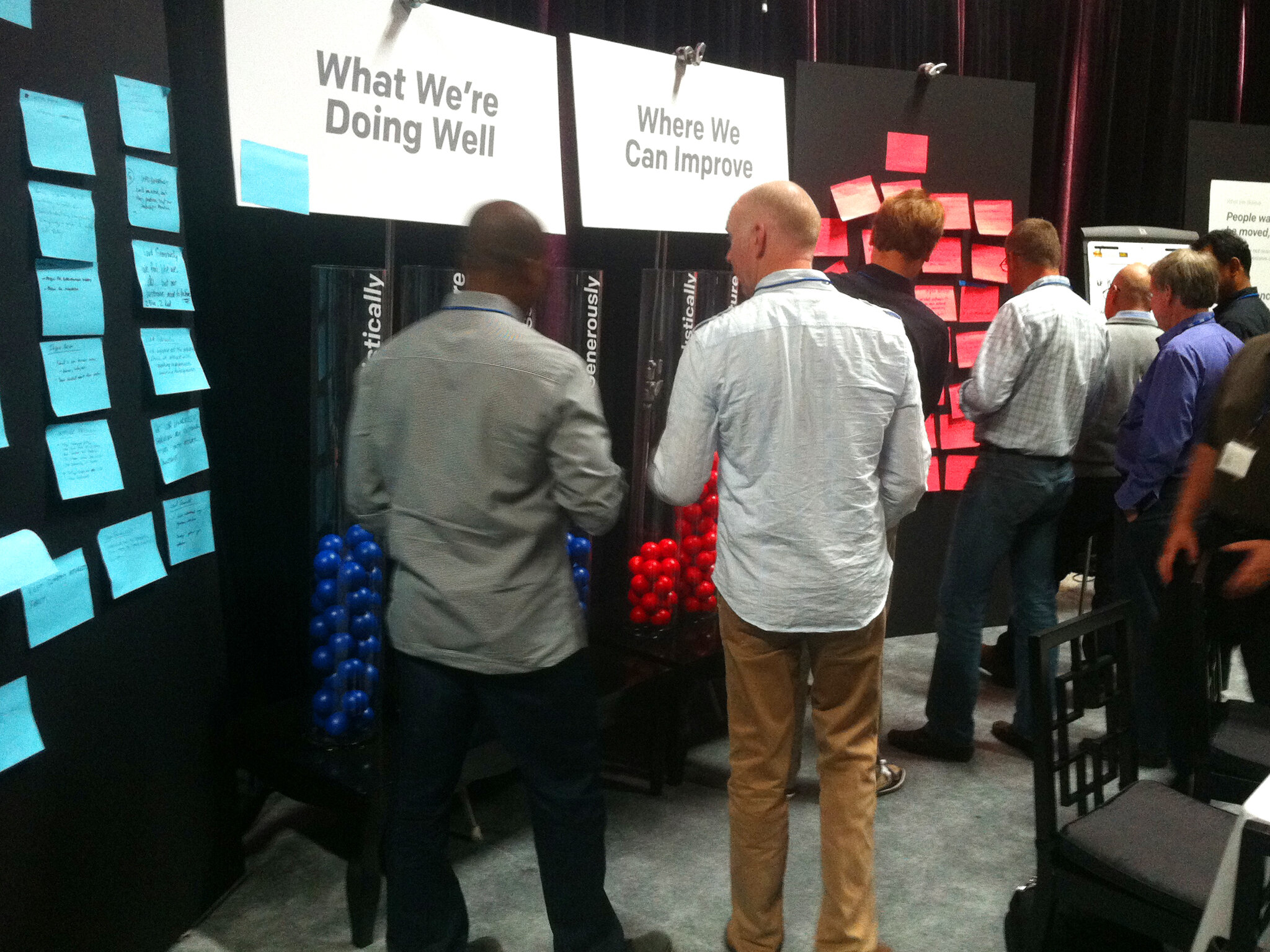

The Research
—
The innovators never left—they just had their hands tied behind their backs.
Rolling up our sleeves and working shoulder-to-shoulder with a bunch of instigators and agitators across the organization, we zeroed in on what made the company great in the first place—and what was standing in the way. On the surface we saw a risk-averse, bureaucratic, and lawyer-driven environment that seemed to be running on autopilot. But as we dug deeper, we found sparks of that same entrepreneurial spirit that Ray had founded the company on. True, the world was changing rapidly—people were going mobile, convenience was trumping fidelity, and niche competitors were creeping in on every side—but the spirit of innovation was alive at Dolby. Their scientists and engineers never stopped imagining, they just hadn’t been set free to invent.
After talking to people on the inside, we spent time with our pals at TBN to make sense of what consumers, content creators, and industry partners were (or weren’t) saying about the brand. We found that what creators and consumers both pined for were incredible experiences. Sure, they wanted to listen to Rihanna through their iPhone speaker while riding their bike. But at a deeper level, they wanted to be transported, wanted to feel, wanted to be lost in the moment.

The Insight
—
Dolby’s magic is to connect science to experience.
As we walked around the labs (yes, there are actually labs at Dolby Labs) we found engineers, programmers and scientists making incredible leaps in audio and visual fidelity. Ray would be beaming if he saw the crazy things these people were creating. We saw three-dimensional sound recording and playback for films (now Dolby Atmos); phone conferencing where the voice of the speaker was projected to where they would be sitting in the room (now Dolby Voice); and a brand new, high-dynamic-range display and projection format whose color was so realistic it made our brains short circuit (now Dolby Vision). Dolby’s inventors weren’t just device obsessed techies—they were musicians and audiophiles themselves who were creating the same transcendent experiences that the filmmakers and consumers we met were pining for. Dolby’s magic is that their passion and expertise allows them to connect cutting edge science with incredible human experiences. That was the insight that gave everyone purpose, and had them nodding their heads in eager anticipation.


The Answer
—
It’s time to rekindle the maker culture within Dolby.
Even though they’d lost their way, there was still a deep and abiding spirit of innovation within the labs. Since the very beginning, Dolby had always stood for the science of sensational clarity—creating experiences that were better than any possible alternative. To a one, their engineers and psychoacoustic researchers believed in the power of sight and sound to transport the viewer—to help people escape, be moved, and feel. The engineers were still itching to push the science further. But the business wasn’t centered around designing the future anymore. It was time to radically rethink everything from their product mix, their partnerships, the way they were organized, and the way they showed up in the world. It was time to actually make things again.
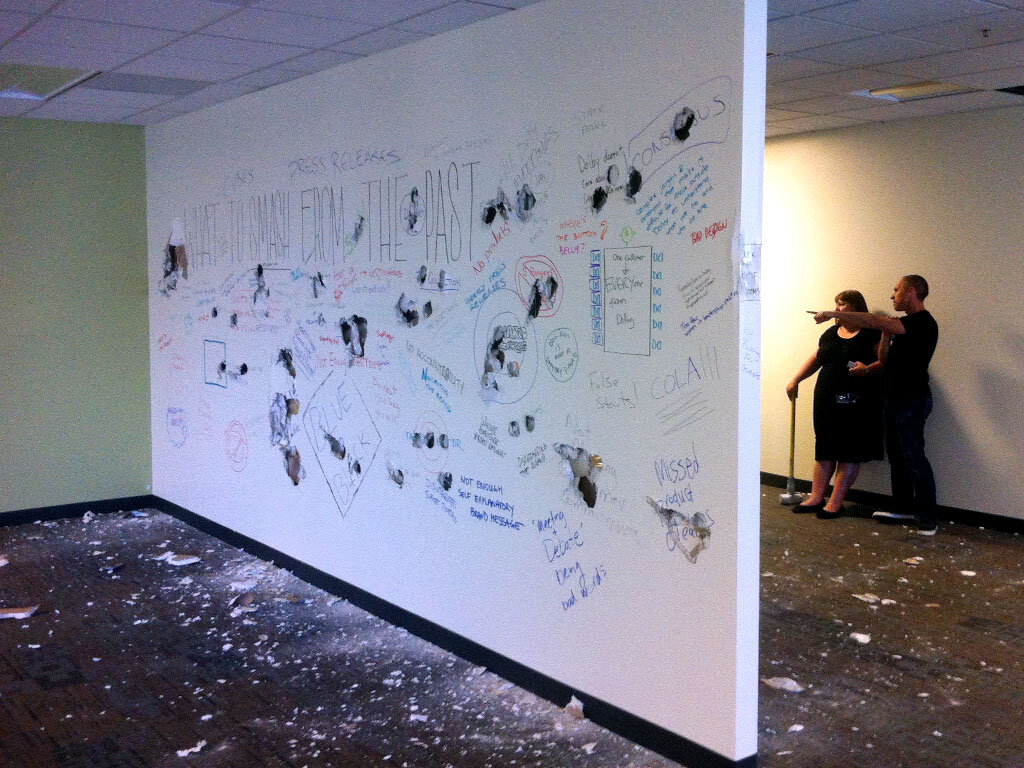

The Work
—
For this consensus-driven org, we needed to workshop the shit out of this project.
Via a series of hands-on workshops with everyone from the worldwide management team, to engineers and technologists on the product side, we began to flesh out a concrete strategy for evolving the business. And not from the top, down. From the bottom, up. Because a change of the magnitude needed to pull this off can’t be mandated. It needs to be co-created with the employees to build alignment and buy-in. So, by provoking people across the org to collectively imagine the possibilities—however harebrained, costly, or seemingly impossible—we were able to begin to prototype a tangible vision for the future. Not in a misty-eyed ‘It’s like the Holodeck’ kind of way. More in a ‘Holy shit, we could actually bring that to market in June’ kind of way. Then we rebuilt their communications around that vision—designing an integrated system for telling the Dolby story in a newly immersive and wholly differentiated way. Documenting the building blocks of that system via a set of digital brand guidelines, we then mentored internal creatives and external agencies as they brought things to life.
“It’s amazing, looking back, at how simple it’s been to act on the vision. And how difficult it’s been, too. At the same time. The simple part has been shifting consumer perceptions. We’re making stuff now that, when people experience it—even for the first time—they’re like: ‘Whoa. So this is what Dolby is.’ They get it. And we have so much permission now.”
Angus McGilpin, Director of Content Development
Bringing the (brand new) brand to life.
Sometimes, the best way to imagine the future of the brand—where it could go both strategically and creatively—is to jump a bit into the future and bring back a few tangible provocations to help get people inside the company on the same page.
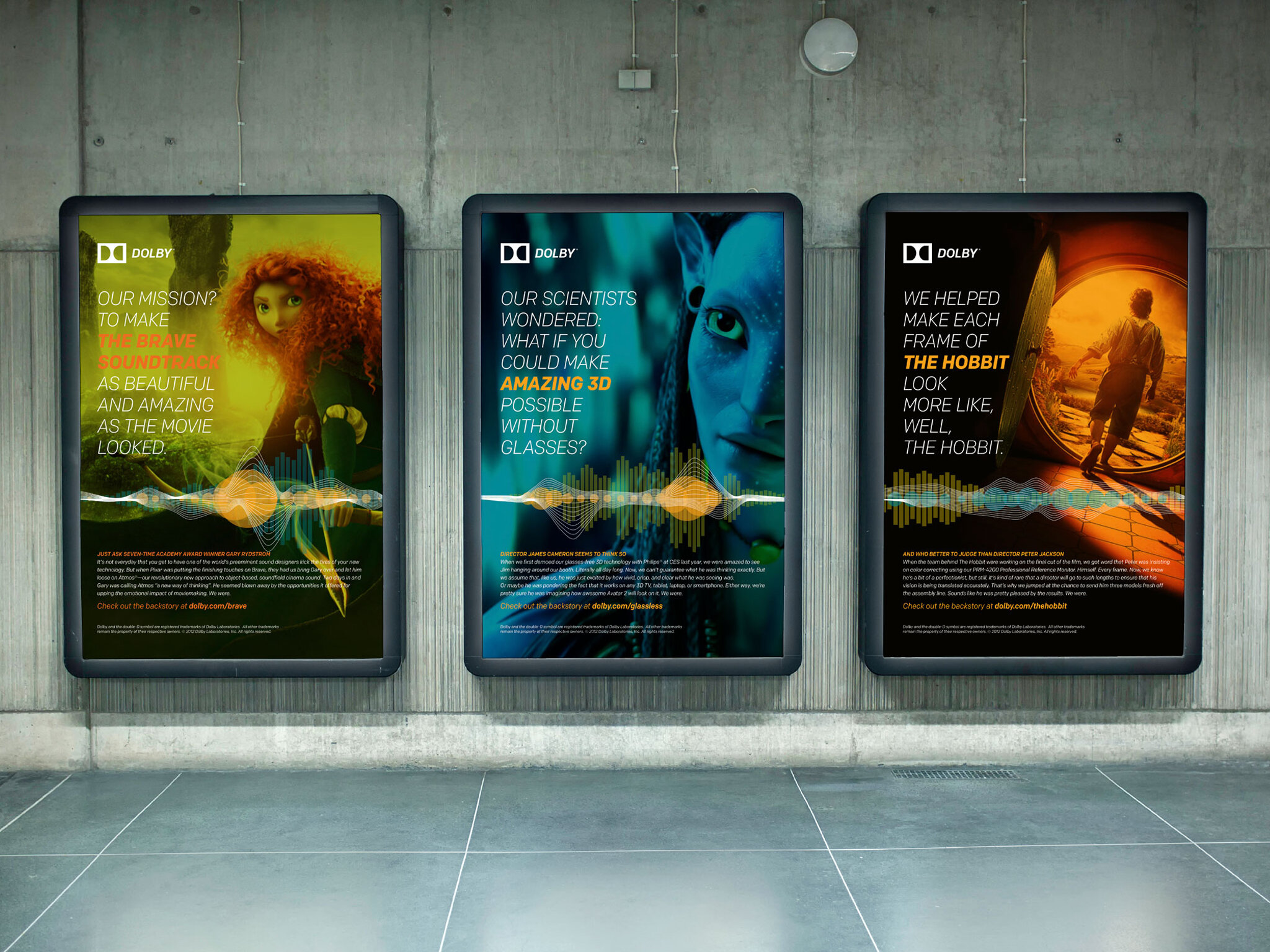
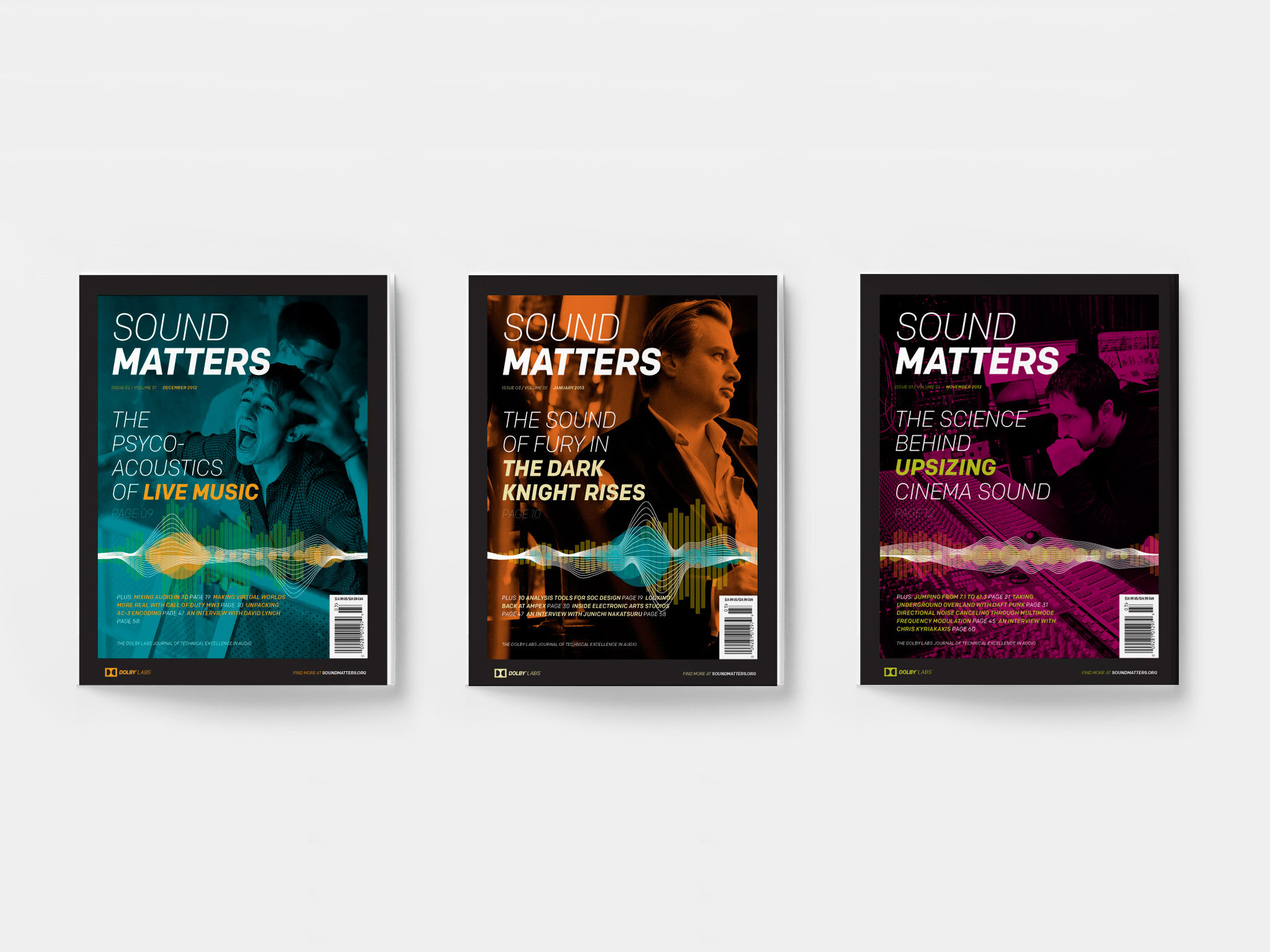

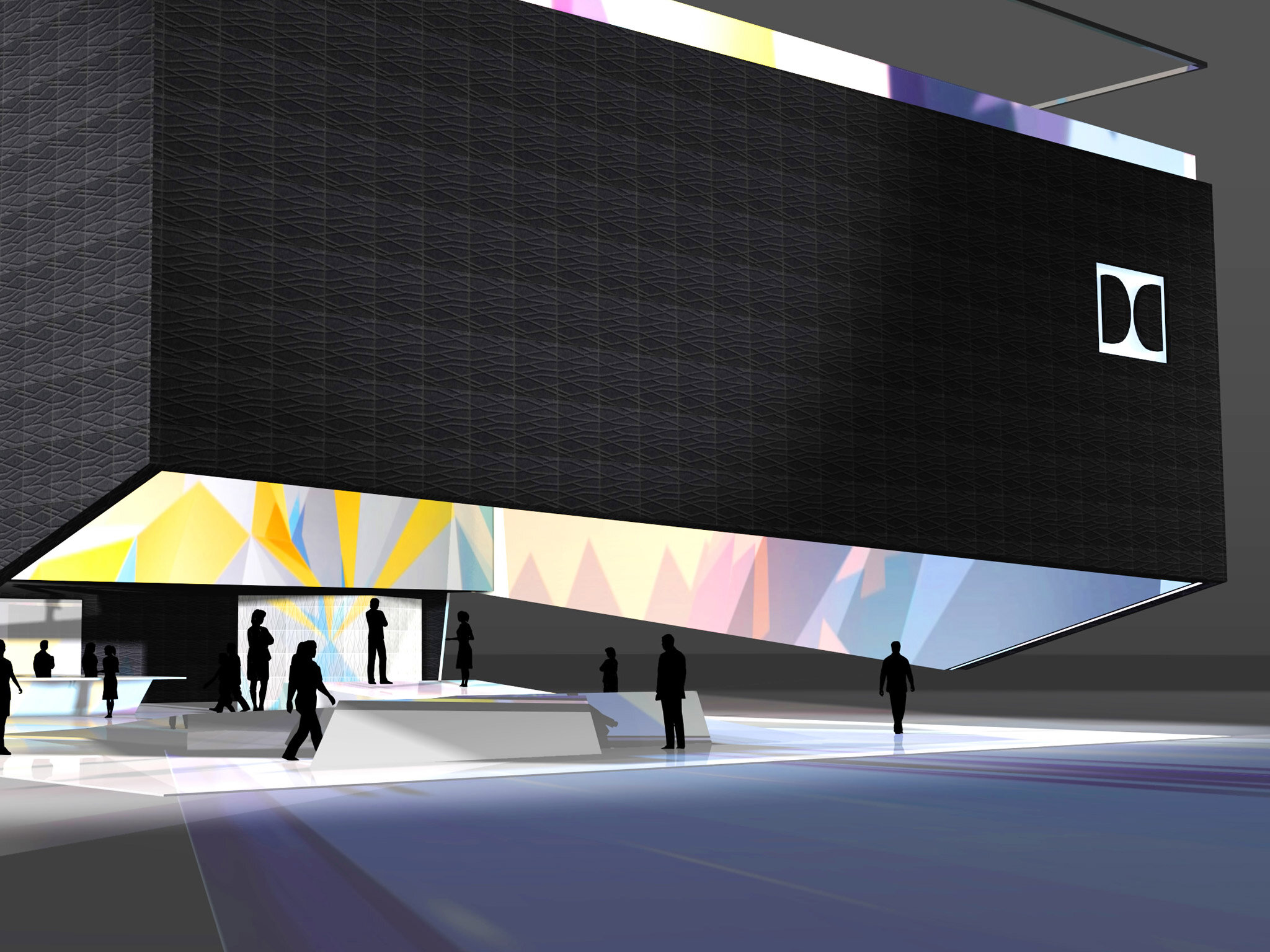

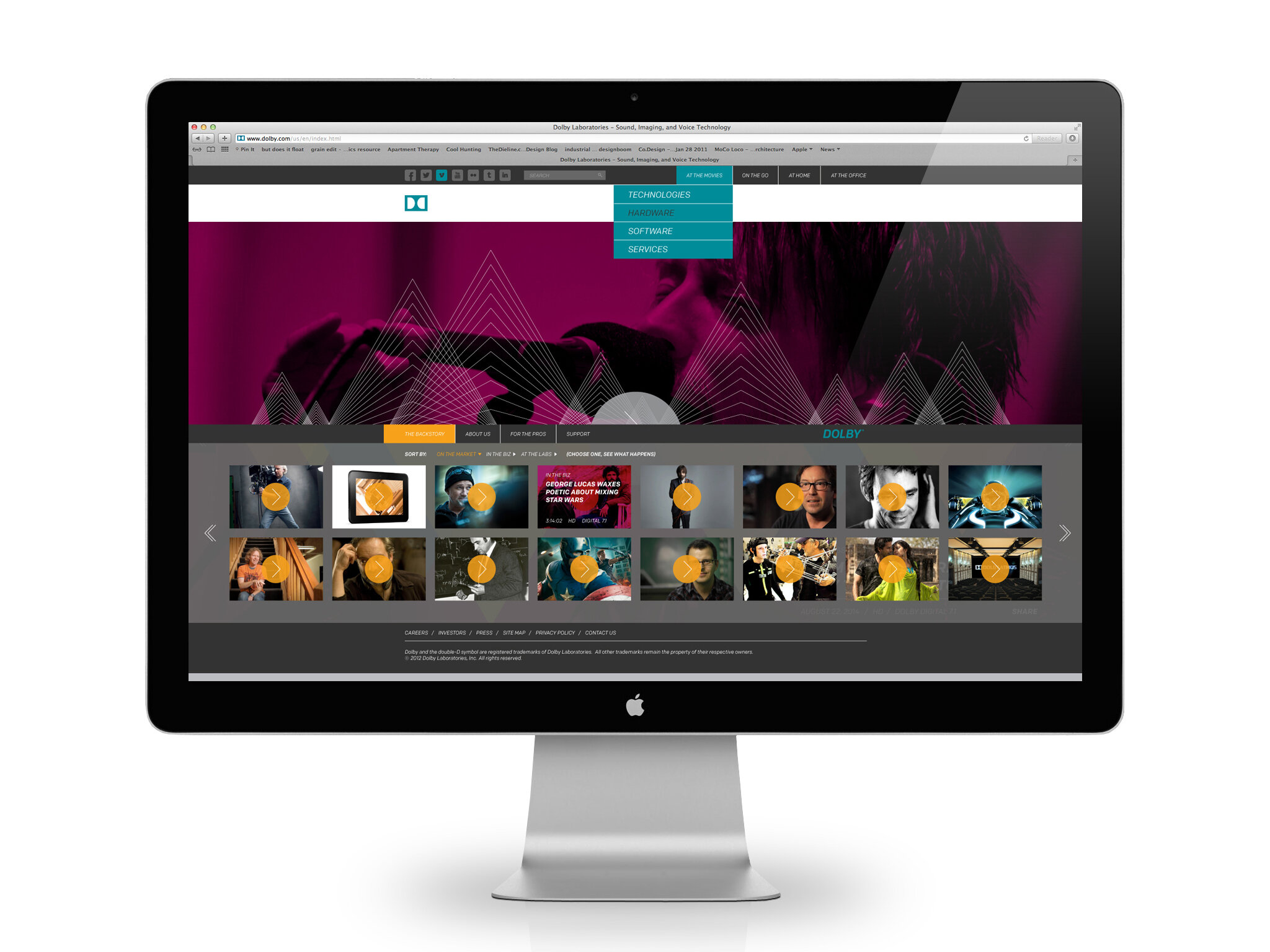
The Ending
—
They’re baaaaaaaaack.
We can’t tell you how gratified we are to see Dolby firing on all cylinders again. Whether it’s reading raves about how mind blowing movies can be in a Dolby Cinema, watching the digirati go nuts about being able to take Dolby Atmos home, listening to the entire cast and crew of Star Wars (and a whole host of other A-list super-fans) rhapsodize on the red carpet about how awesome The Force Awakens is in Dolby Vision, seeing the company finally roll out their own brand of ultra high-end surround sound headphones, or just walking into their amazeballs new headquarters on Market Street (whose interior doubles as a gallery of experiential art), we’re constantly reminded of the power of curiosity. We’re gratified that by giving people the room to ask difficult questions and think differently about the answers, our work has made a difference. Basically, everything that’s up with Dolby right now, began as a hastily scribbled Post-It note on foam core at Left Space, or Dogpatch Studio, or our offices. It wasn’t us—it was all them and it was there the whole time, just dying to come out.
That’s why we couldn’t be prouder. And Ray would be, too.
What We Did

